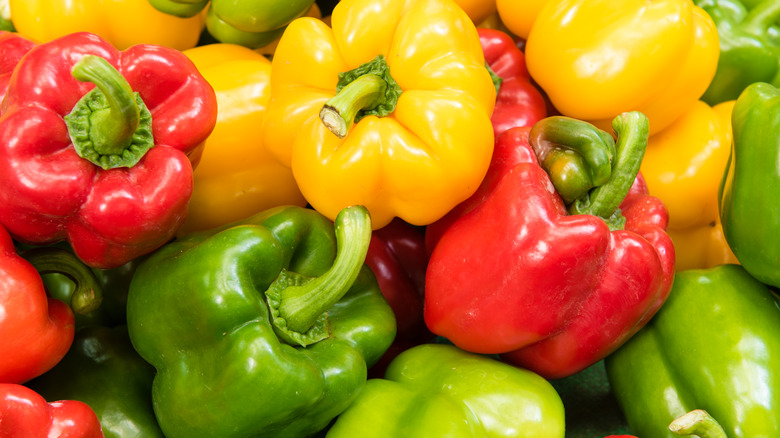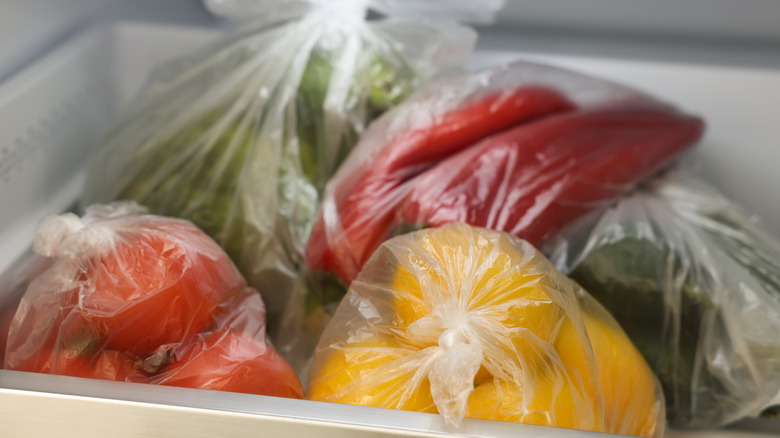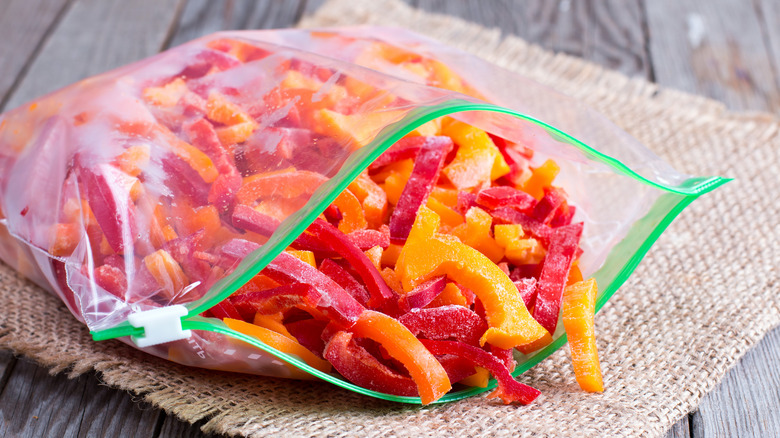The Best Way To Store Bell Peppers So They Last Longer
Bell peppers are one of the produce section's many unsung heroes. They're available in a variety of colors, including the less common purple, white, and brown varieties. And, they certainly lend a flavorful kick to a variety of dishes, from roasted bell pepper risotto to a basic stuffed peppers recipe.
But, in anticipation of all of the tasty meals you might whip up with them, you may have accidentally snagged one too many bell peppers at the grocery store. Fret not; you don't have to rush to use up all of those extra peppers before they go bad — you just have to make sure you store them properly. If you plan to consume them in a couple of days, storing them at room temperature on your kitchen counter will suffice, so long as you keep them in a cool, dry place.
However, if you want them to stay fresh for longer, the best option is to store them in your refrigerator's crisper drawer, which will help prolong their shelf life to about a week — maybe two.
Store your bell peppers in the crisper drawer
When it comes to storing bell peppers, not just any nook or cranny of your refrigerator will do. The crisper drawer is ideal because it has a different level of humidity than other parts of the fridge. By controlling the amount of air that flows through the vents, the drawer helps to enhance the freshness of many veggies and fruits, including peppers.
However, since bell peppers have tougher skins, just be sure to set your drawer to low humidity, which is best for thicker-skinned produce. The "high humidity" setting is suitable for fruits and veggies with thinner skins, as well as produce that easily wilts, such as lettuce, spinach, and other leafy greens. It's also good to keep your peppers in a plastic bag, but leave it open or make sure it has holes for better air circulation.
Of course, the color of your peppers, among other factors, will likely determine how long they last. Since the green variety is less ripe, it usually stays fresher longer than other colors, such as red or yellow peppers, which are picked after they've ripened. But, regardless of color, it's also important to note that storing bell peppers whole is best because they don't last very long in the fridge when they're cut. Even if they're stored properly in an airtight container with a paper towel to help soak up extra moisture, they still only stay good for about two days.
You can freeze bell peppers, too
If you don't plan on eating your bell peppers within a week, then your best bet is to freeze them. This will help to extend their lifespan even more as the frozen variety can last upwards of six months in the freezer — and sometimes even as long as a year. As you would with any fruit or veggie, wash and dry your peppers before preparing them to freeze, which entails cutting off the tops and removing the stems, seeds, and other innards.
Depending on your preference, you can either freeze the peppers whole or cut them. If you opt for the former, simply replace the top and wrap the fruit in plastic wrap before putting it in an airtight freezer bag, removing as much air as possible before sealing it. If you choose to slice or dice your peppers, you don't have to wrap them in plastic wrap — just be sure to get all of the extra air out of the bag before closing the baggie.
Lastly, consider writing the date that you froze your peppers on the bag, which will help you keep track of how long they've been in the freezer.



